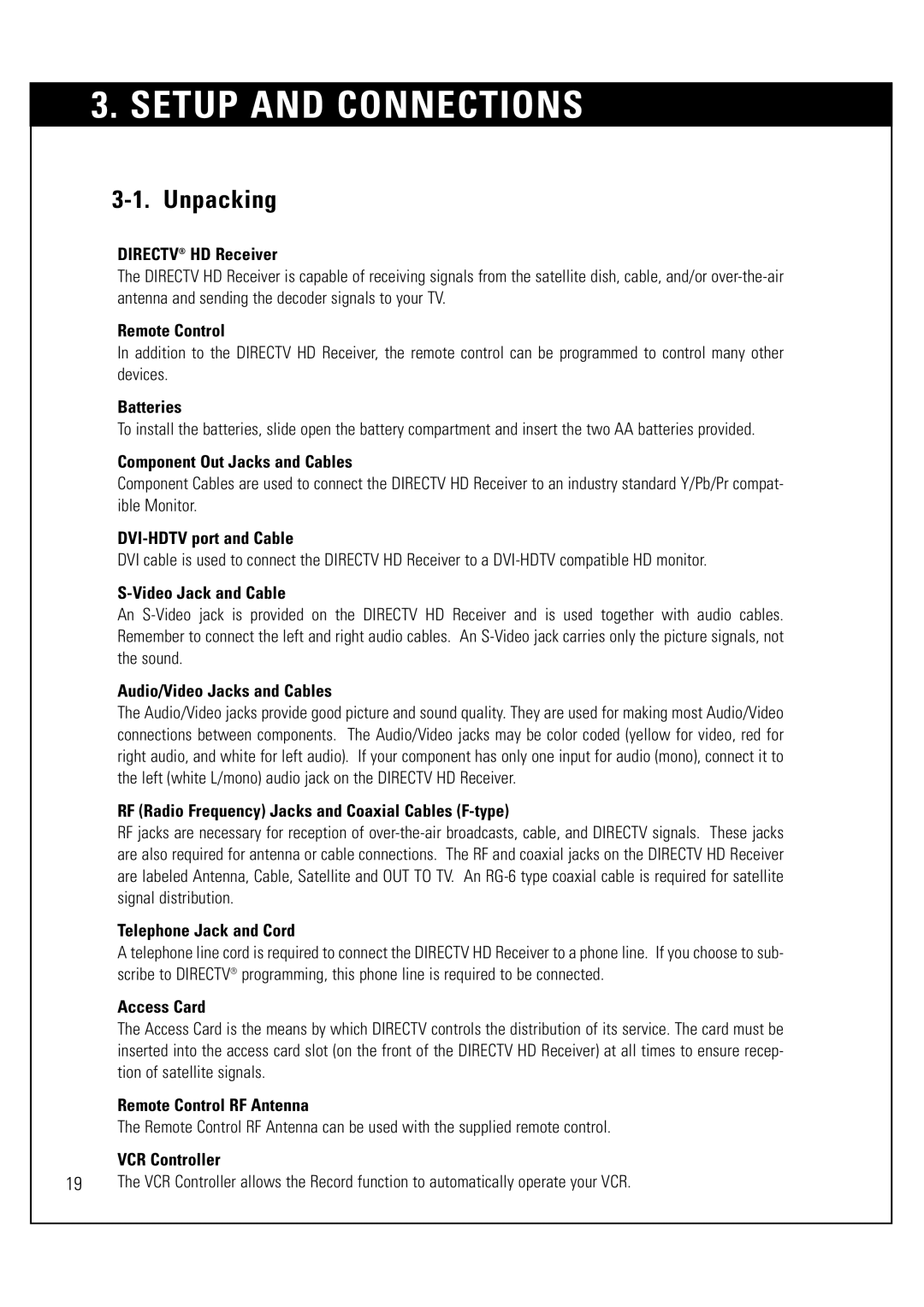
3. SETUP AND CONNECTIONS
3-1. Unpacking
DIRECTV® HD Receiver
The DIRECTV HD Receiver is capable of receiving signals from the satellite dish, cable, and/or
Remote Control
In addition to the DIRECTV HD Receiver, the remote control can be programmed to control many other devices.
Batteries
To install the batteries, slide open the battery compartment and insert the two AA batteries provided.
Component Out Jacks and Cables
Component Cables are used to connect the DIRECTV HD Receiver to an industry standard Y/Pb/Pr compat- ible Monitor.
DVI-HDTV port and Cable
DVI cable is used to connect the DIRECTV HD Receiver to a
S-Video Jack and Cable
An
Receiver and is used together with audio cables. An
Audio/Video Jacks and Cables
The Audio/Video jacks provide good picture and sound quality. They are used for making most Audio/Video connections between components. The Audio/Video jacks may be color coded (yellow for video, red for right audio, and white for left audio). If your component has only one input for audio (mono), connect it to the left (white L/mono) audio jack on the DIRECTV HD Receiver.
RF (Radio Frequency) Jacks and Coaxial Cables (F-type)
RF jacks are necessary for reception of
Telephone Jack and Cord
A telephone line cord is required to connect the DIRECTV HD Receiver to a phone line. If you choose to sub- scribe to DIRECTV® programming, this phone line is required to be connected.
Access Card
The Access Card is the means by which DIRECTV controls the distribution of its service. The card must be inserted into the access card slot (on the front of the DIRECTV HD Receiver) at all times to ensure recep- tion of satellite signals.
Remote Control RF Antenna
The Remote Control RF Antenna can be used with the supplied remote control.
VCR Controller
19The VCR Controller allows the Record function to automatically operate your VCR.
